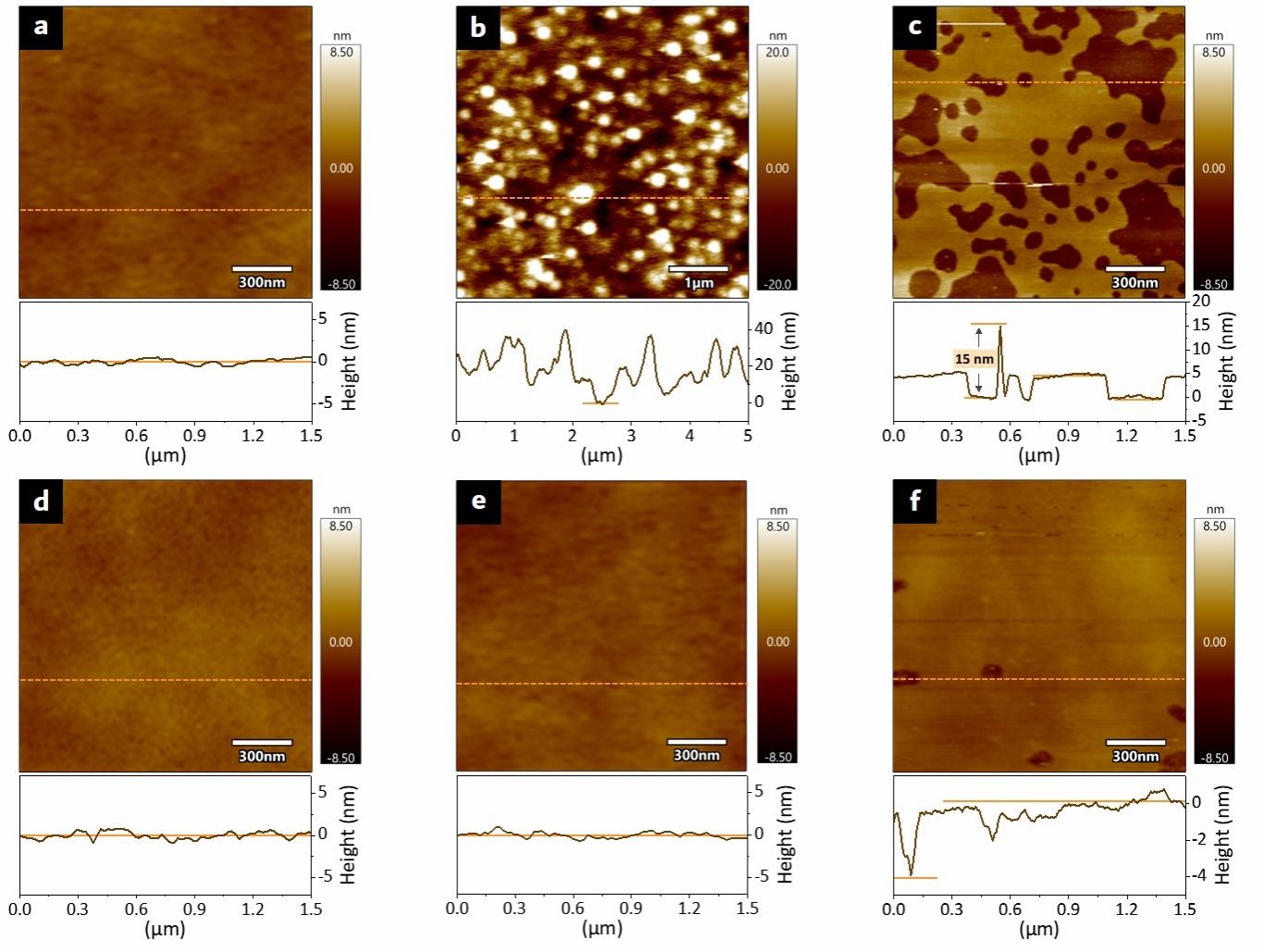
Xiaojia Xu, Shuwen Tan, Yao Fu, Wenlong Xing, Yaping Song, Xiaoyan Liu*, Yu Fang. Langmuir 2025, 10.1021/acs.langmuir.4c04405

Solid supported lipid bilayers (SLBs) serve as an excellent platform for biophysical studies. However, the formation of highly negatively charged SLBs on negatively charged surfaces remains a challenge due to electrostatic repulsion. The study employed two methods for applying osmotic pressure: altering the ion strength on one side while maintaining constant ion strength on the vesicle's interior or exterior. Here, we study the effects of ionic strength and osmotic stress on the formation of highly negatively charged SLBs on the silica surface. We used quartz crystal microbalance-dissipation to study the adsorption and rupture of highly negatively charged small unilamellar vesicles on the silica surface in different concentrations of NaCl and under different osmotic stresses.

Figure 1. Δf and ΔD as a function of time during adsorption and rupture of the DOPC/DOPS vesicleson the silica surface under different osmotic stresses (πNaCl). The osmotic stress was generated by the method in which the NaCl concentrationoutside the vesicles (CNaCl_ex) was fixed to (a) 500 mM and (b) 750 mM. (c) Δf C and tC during the formation of the SLBs under different osmotic stresses.

Figure 2. AFM height images of the SLBs formed by the vesicles under different osmotic stresses [(a and d) hypertonic (πNaCl = 1000 mOsm), (b and e) isotonic, and (c and f) hypotonic (πNaCl = −800 mOsm)] with the NaCl concentration outside the vesicles kept constant [(a−c) CNaCl_ex =500 mM, and (d−f) CNaCl_ex = 750 mM]. The section analyses show the height profiles along the corresponding lines indicated in the height images.
It was demonstrated that an increase in the ionic strength of the solution enhances SLB formation. Both hypertonic and moderate hypotonic osmotic stress can promote the formation of SLBs. However, the SLB cannot be formed under high hypotonic osmotic stress. Importantly, osmotic stress alone without a change in ionic strength is insufficient to promote SLB formation. Moreover, the topographical images obtained by atomic force microscopy showed that complete bilayers were formed under hypertonic osmotic stress and high ionic strength, whereas defects were noticed in the bilayers formed under hypotonic osmotic stress. Furthermore, the fluidity of the lipid bilayers was studied by fluorescence recovery after photo bleaching. A higher membrane fluidity was observed for the complete lipid bilayers compared to that of the lipid bilayers with defects. For preparing charged lipid membranes by applying osmotic stress, we recommend the internal method due to its narrower ionic strength range and simpler operation. To determine the mechanism of charged lipid bilayer formation with a change in osmotic stress, the external method should be used because it enables us to distinguish the effects of electrostatic interaction and osmotic stress. Our findings provide insights into the preparation of model cell membranes on solid surfaces and also have important biomedical implications, in areas such as biosensors and drug carriers.
First Author: Xu Xiaojia, master’s student, Shaanxi Normal University
Correspondence Author: A/Prof. Liu Xiaoyan, Shaanxi Normal University
Full Text Link: https://doi.org/10.1021/acs.langmuir.4c04405